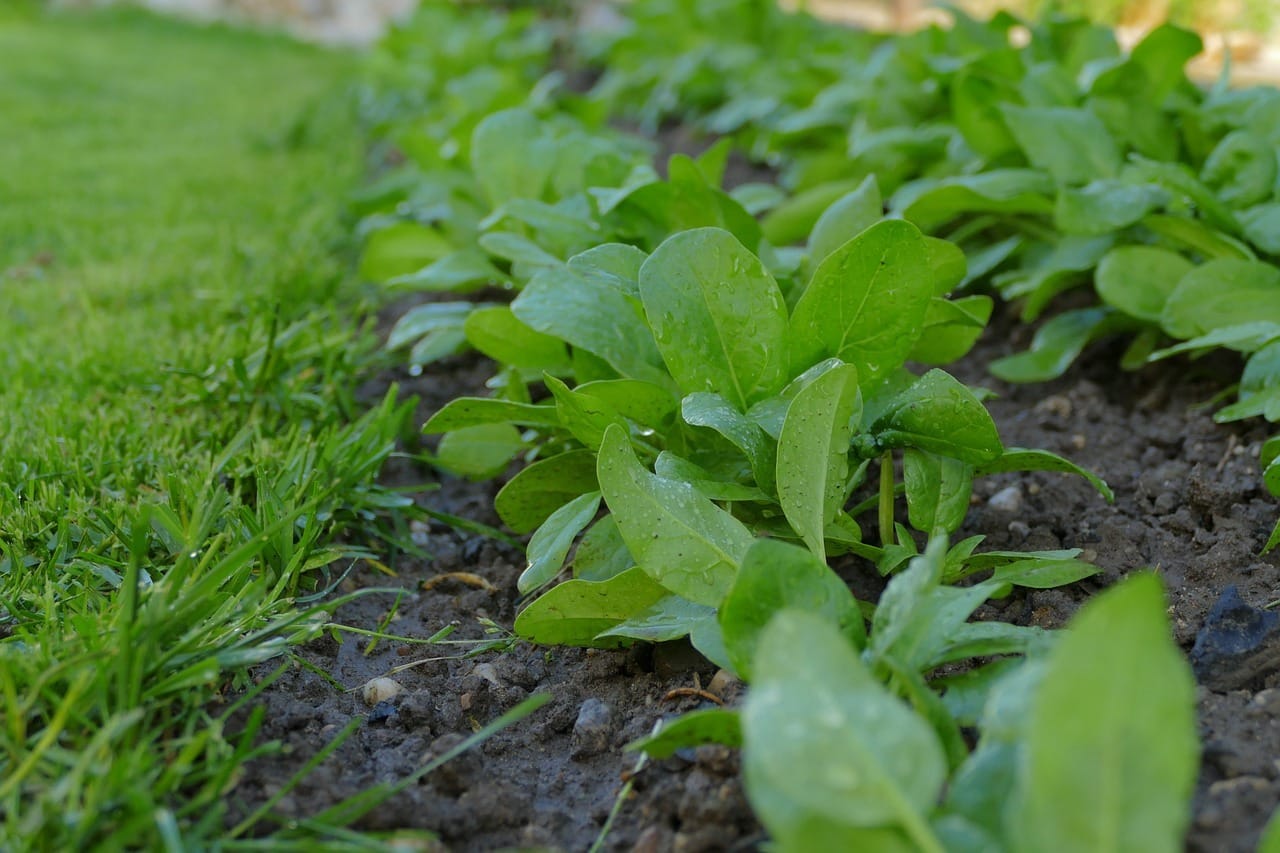Ayurveda, the ancient science of life and natural healing, has always emphasized the connection between food and wellness. Among the many plants revered for their healing properties, palak (spinach) holds a prominent place. This nutrient-dense leafy green is not only celebrated for its culinary versatility but also for its profound ability to balance the body and mind. In Ayurveda, it is seen as a sattvic food—nourishing, light, and pure—that supports vitality, harmony, and inner balance. Let’s explore why it is considered an essential part of Ayurvedic health and wellness.
Balancing the Doshas: Vata, Pitta, and Kapha
In Ayurveda, health is achieved when there is harmony among the three doshas—Vata, Pitta, and Kapha, which represent the fundamental energies of the body and mind. Each individual has a unique doshic constitution, and imbalances can lead to illness. Palak is recognized for its ability to balance all three doshas, thanks to its cooling, moistening, and light qualities.
Vata Dosha: Vata is characterized by dryness, lightness, and coldness. When Vata is aggravated, it can lead to symptoms such as constipation, anxiety, dry skin, and joint pain. Palak, with its moistening and grounding properties, helps to counteract these effects. Its natural fiber content supports regular bowel movements and soothes the digestive system, which is often impacted by a Vata imbalance.
Pitta Dosha: Pitta is associated with heat, intensity, and inflammation. Excess Pitta can manifest as anger, heartburn, skin rashes, and acidity. The cooling nature of palak helps to calm Pitta by reducing internal heat and promoting a sense of tranquility. Its anti-inflammatory properties are particularly beneficial for soothing the stomach and skin.
Kapha Dosha: Kapha embodies heaviness, lethargy, and congestion. When Kapha becomes excessive, it can lead to weight gain, respiratory issues, and sluggishness. Palak’s light and detoxifying qualities help to pacify Kapha. It aids in clearing mucus from the respiratory system, enhances metabolism, and boosts energy levels.
Immunity Booster
A strong immune system is central to Ayurvedic health. Palak is a natural powerhouse of vitamin C, vitamin A, iron, and antioxidants, which collectively strengthen immunity. The antioxidants in palak, such as flavonoids, beta-carotene, and lutein, combat free radicals and oxidative stress, reducing the risk of chronic diseases. In addition, its nutrient profile supports ojas—the subtle energy that represents vitality and immunity in Ayurveda.
Regular consumption of palak is particularly beneficial during seasonal transitions when the immune system is more vulnerable. Ayurveda also emphasizes the role of digestion (agni) in immunity. It’s digestibility ensures that the body absorbs nutrients effectively, further enhancing immune function.

Miduty Palak Notes Liver Detox Supplement Milk Thistle Natural Body Detox & Digestive Enzymes- Fit Health Fatty Liver Care – Supports Fatty Liver, Natural Detoxification Formula – 60 Capsules
Helps To Improves Digestive Health
Digestive health is a cornerstone of Ayurveda, and palak is highly regarded for its ability to promote a strong and balanced digestive system. Its natural fiber content aids in maintaining regular bowel movements and preventing constipation, a condition often linked to Vata imbalance.
Additionally, it’s alkalizing properties help neutralize excess stomach acid, making it an effective remedy for acid reflux, gastritis, and other Pitta-related digestive issues. The gentle cleansing action of palak supports the liver and gallbladder, organs vital for digestion and detoxification.
For individuals with sluggish digestion or Ama (toxins) accumulation, it provides a light yet nourishing option that kindles agni without overburdening the digestive system.
Promotes Detoxification
Detoxification is an integral part of Ayurvedic practice, as it helps maintain the balance of the doshas and supports overall vitality. Palak’s high fiber content acts as a natural cleanser for the digestive tract, flushing out toxins and waste. Its mild diuretic properties support kidney health by promoting the elimination of excess fluids and salts.
In Ayurveda, the liver is considered a primary site for detoxification, and palak is known to support liver function due to its rich supply of chlorophyll and antioxidants. These nutrients help protect the liver from oxidative damage while enhancing its ability to filter and eliminate toxins.
The cooling nature of palak also makes it an excellent food for Pitta-related detox programs, where reducing heat and inflammation is essential.
Supports Heart Health
Cardiovascular health is vital for maintaining ojas and overall well-being in Ayurveda. Palak is rich in vitamin K, folate, potassium, and dietary nitrates, all of which contribute to heart health. These nutrients help regulate blood pressure, improve blood flow, and prevent the buildup of arterial plaque.
From an Ayurvedic perspective, palak’s sattvic nature supports emotional health, which is closely linked to heart health. By calming the mind and reducing stress, It helps maintain a balanced and harmonious heart-mind connection.
The antioxidants in palak also play a protective role by reducing inflammation and oxidative stress, both of which are significant contributors to cardiovascular disease.

SHROOTS Dehydrated Spinach (Palak) Leaves Flakes | 100% Natural & Pure Vegetarian | Machine-Dried for Maximum Freshness | No Preservatives, Nutrient-Rich & Flavorful | Ideal for Cooking, Soups, Curries & Seasoning | 30g Each (Pack of 5)
Enhances Skin Health
In Ayurveda, skin health is viewed as a reflection of internal balance. It’s rich nutrient profile makes it a natural remedy for achieving glowing and healthy skin. Vitamins A, C, and E, along with antioxidants, support collagen production, combat free radical damage, and promote skin repair.
The cooling properties of palak help reduce inflammation, redness, and irritation, making it particularly effective for treating Pitta-related skin conditions such as acne, eczema, and psoriasis. Additionally, the detoxifying effects of palak aid in clearing toxins from the bloodstream, which further enhances skin clarity and radiance.
Regular consumption of palak can also help combat dryness and dullness, common symptoms of Vata imbalance, by providing hydration and nourishment from within.
Provides Energy and Vitality
Iron and folate are two critical nutrients in palak that contribute to energy production and vitality. Iron supports the formation of hemoglobin, which is essential for transporting oxygen throughout the body. This helps prevent anemia, a condition that can lead to fatigue, weakness, and poor vitality.
In Ayurveda, energy is not only physical but also subtle. Palak nourishes the body’s prana (life force) and supports sustained energy levels by balancing agni and promoting optimal nutrient absorption. For individuals recovering from illness or experiencing low energy due to Kapha imbalance, it serves as a rejuvenating food that restores strength and vitality.
Regulates Blood Sugar Levels
It’s low glycemic index and high fiber content make it an ideal food for managing blood sugar levels. The fiber slows down the absorption of glucose, preventing sudden spikes in blood sugar. This is particularly beneficial for individuals with diabetes or insulin resistance.
In Ayurveda, balanced blood sugar levels are essential for maintaining equilibrium among the doshas. It’s bitter and slightly astringent taste is also believed to help regulate sugar metabolism, making it a valuable addition to an Ayurvedic diet for diabetes management.
Supports Weight Management
Maintaining a healthy weight is important for balancing the doshas and promoting overall health. It is a low-calorie, nutrient-dense food that supports weight management by promoting feelings of fullness and reducing unhealthy cravings. Its high fiber content aids in digestion and metabolism, key factors in weight control.
From an Ayurvedic perspective, it’s light and detoxifying qualities help reduce excess Kapha, which is often associated with weight gain and sluggishness. Incorporating palak into meals can help balance Kapha while providing essential nutrients that support sustained energy and vitality.
Promotes Mental Clarity and Focus
Ayurveda recognizes the profound connection between food and mental health. It is considered a brain-nourishing food, as it contains nutrients like folate, vitamin K, and magnesium that support cognitive function. These nutrients enhance memory, focus, and mental clarity by promoting healthy blood flow to the brain and reducing oxidative stress.
Additionally, it’s sattvic nature fosters a calm and focused mind. It helps reduce mental agitation and stress, making it an excellent choice for individuals seeking to enhance their meditative and spiritual practices.
How to Include Palak in Your Ayurvedic Diet
Incorporating palak into your diet is simple and versatile. Here are some Ayurvedic-inspired ways to enjoy this nutrient-rich leafy green:
Raw Palak: Add fresh palak leaves to salads or smoothies to retain their maximum nutrient content.
Palak Soup: Prepare a warm, spiced palak soup to soothe the digestive system, especially during colder seasons.
Palak Paratha: Mix palak puree with whole grain flour to make nutritious Indian flatbreads.
Palak Juice: Blend fresh palak leaves with a hint of ginger and lemon for a detoxifying and energizing drink.
Palak Curry: Cook palak with spices like turmeric, cumin, and coriander for a flavorful and health-boosting dish.
Conclusion
In Ayurveda, palak is much more than a mere vegetable; it is a medicinal food with transformative healing properties. By balancing the doshas, supporting digestion, detoxifying the body, and promoting heart, skin, and mental health, it serves as a cornerstone of holistic wellness. Whether you aim to boost your immunity, manage your weight, or enhance your energy and vitality, incorporating palak into your daily diet can pave the way for a healthier, more balanced life.
Embrace this nutrient-rich leafy green as part of your Ayurvedic journey and experience the profound benefits it offers to both body and mind.







